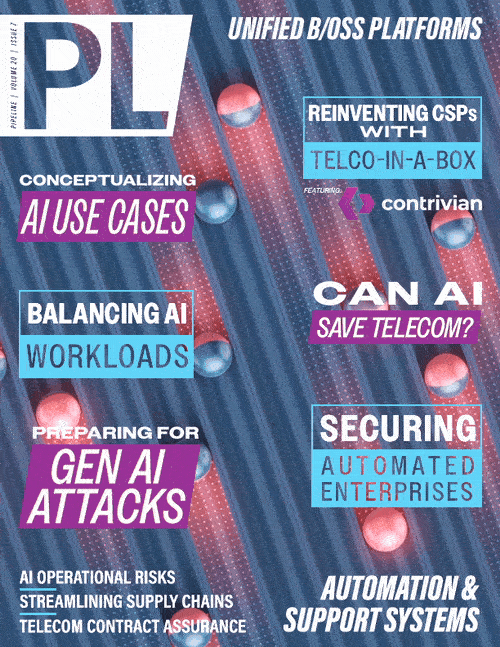The Emergence of Common Platforms
By: James O'Brien

The concepts of OSS (Operations Support Systems) and BSS (Business Support Systems) originated in the telecommunications industry. Historically, they were largely separate ecosystems. Above the level of hardware (often not even that), they had little in common. Over the last fifteen years, however, the differences have become far less pronounced with the emergence of cloudification/cloud-native (containerization) and SaaS.
Cloudification and new methods, such as adopting containerization and microservices, bring challenges as architectures become moving targets. These new methods require new skill sets and technologies. In modern environments, the goal is to build common platforms and practices that can cover as many domains as possible using, if not a single platform, then at least a single approach.
This is not a problem exclusive to the telco industry. It's important to note that these issues are pervasive across various industries that heavily rely on distributed infrastructure, such as energy and manufacturing.
BSS, OSS, and Network are not so Different Anymore
Cloud, OSS, BSS and (Core) networks now use the same deployment architecture. They run or aspire to run as much as possible in containerized environments. Moreover, the convergence of BSS, OSS, and Network domains is not just a technical shift; it is a monumental transformation shaping the future of OSS/BSS.
OSS and Networking are now very closely related. Many classical OSS functions have shrunk or been replaced with standard tools used in container environments, such as Prometheus/Grafana for monitoring, Terraform, Ansible, or ArgoCD and so on for infra and container deployment. Although these domains have retained a high level of separation regarding the domain knowledge needed to understand business & networking needs, most of the underlying technologies required to run them have converged.
The challenges, however, with cloudification, public or private, such as managing distributed computing infrastructure and networking, meeting resiliency and latency requirements, and complying with legal and regulatory obligations, are significant and require careful consideration.
What Changed with Cloudification
In today's dynamic environments, systems are increasingly adaptable. Businesses now expect greater agility, a significant driver behind the shift towards cloud technology. As a result, tools like Kubernetes have become standardized essentials in this transformation.
With cloudification the differences between OSS and Networking have arguably all but disappeared. NFVs (Network Function Virtualization) and OSS apps are primarily deployed and managed similarly. Many tasks that classically required an OSS tool can be covered by (now) “standard” cloud automation and observability tooling. CI/CD (Continuous Integration/Continuous Deployment) has also become the name of the game. This is a set of practices that enable frequent, automated changes to a codebase, ensuring that software is always in a releasable state.
The advent of these new technologies necessitates the development of new methods to harness their potential. Understanding how to extract value from these technologies requires significant time and effort. Modern platforms and development require massive amounts of packaging and wrapper code. Most of the work involves automating the deployment and management of application environments, such as Git repos, Terraform, networking, and so on.
Challenges in Modern Environments
Telcos and other infrastructure-intensive industries have a strong focus on engineering and operations. This makes the engineering-heavy approaches found in cloud and cloud-native very attractive to a telco audience. However, there are some serious risks to this.
Problems of Scale
Large, complex enterprises implementing large programs require methods and approaches that work at that scale. Most of the proven methods in cloud-native technology have focused on solving problems at a (relatively small) scale. While success stories often involve companies that operate at massive scale, such companies typically do not have complex business models in regulated industries and were able to grow organically. In other words, they did not have to start big and they were driven by few applications.
Telecommunications and other regulated industries, on the other hand, face significant constraints and challenges. They must start big, initiating projects at an enterprise scale, and cannot deploy transformations incrementally, such as replacing an Integrated Management System (IMS). Stringent regulatory requirements for critical infrastructure also bind these sectors and their more complex and specialized technical applications.
Typically, these projects are centered around something other than application development, which is often sourced from Independent Software Vendors. Instead, they focus on system integration, constructing private or hybrid clouds, and developing pipelines to deploy code from other companies. While public clouds have many


















